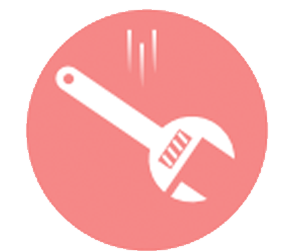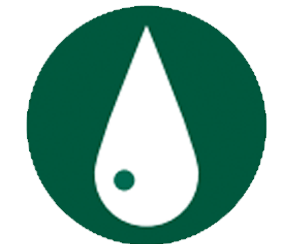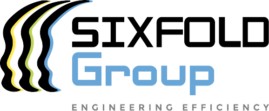Safety Golden Rules
Golden Rules
PROTECTING PEOPLE, IMPROVING PERFORMANCE
The Golden Safety Rules summarise the mandatory requirements for safety in the workplace. This includes management aspects of work such as planning, competency and documentation requirements.
As the Golden Safety Rules do not cover all operational risks it’s important that you make yourself aware of any other safety requirements before undertaking, and during work.
We continue to learn and review and improve our procedures to align with industry best practices.

GOLDEN RULE 1
MANAGEMENT OF CHANGE
Any permanent or temporary plant/organizational, technical design or work process change must be
identified, assessed and authorized by the responsible for the workplace.
- Recognize, examine, and evaluate any deviations from plant design, work procedures/practices, and organization.
- The change's effects must be recognized and the associated risks evaluated.
- A plan outlining the changes along with a timeline and control measures to be implemented must be established.
- The change must be approved, communicated, and overseen until completion.
- Has the change been properly documented and monitored using a specific system.
- Inform all relevant personnel of all the changes and executed actions.
GOLDEN RULE 2
PERMIT TO WORK
Before starting work always comply with the Permit to Work system this is an essential and
mandatory management tool to be adopted for non-routine or dangerous activities.
- Never begin any task unless it has an approved work permit, procedure, or routine.
- Any permit must have a defined scope of work and be approved and valid.
- If applicable verify isolations are in place before starting work.
- Communicate the permit's conditions and status to all involved parties before starting and during the handover.
- Involve all participants in the Toolbox Talk before any work starts.
- Stop, secure, and reevaluate work if circumstances or conditions change.


GOLDEN RULE 3
ELECTRICAL SAFETY
Implementation of procedures, controls and specialized personnel guarantee safety during activities where energized systems are present.
- Identifying the need for isolation and the safe release of energy.
- Authorized personnel must review and approve isolation schemes or plans before implementation.
- Clear identification, verification, labelling, and lockout of all isolation points are crucial in avoiding unintentional activation of equipment or circuits.
- All Portable electrical equipment must be inspected, checked, tested and confirmed in good condition before use.
- Ensuring that isolations have been thoroughly examined and given the correct approval.
- Verification of de-energization must be performed before starting any activity, and also after any interruptions or changes in conditions.
- Testing or fault finding on or near exposed live conductors is not permitted.
GOLDEN RULE 4
WORKING AT HEIGHT/DROPPED OBJECTS
Before starting work at heights, proper equipment and protection systems during work at height activities ensure the worker's safety. Whilst preventing dropped objects by:
- Ensuring the proper storage, maintenance, and inspection of tools and equipment, as well as through the use of safety harnesses and other personal protective equipment.
- Use of a fall prevention system must limit free falls to two metres or less.
- Verifying that the correct equipment has been provided;
- Ensuring that platforms have safe access points for workers to enter and exit and that they have appropriate guard rails to prevent falls.
- Making sure that all workers have received proper training on how to use the platform safely, including any necessary equipment and procedures.
- Securing tools and equipment to prevent them from falling and potentially causing injury to workers or damage to the surrounding area.
- Setting up physical barriers, such as guardrails, barriers or netting, over areas below a worksite where objects or debris might fall and cause harm.


GOLDEN RULE 5
PROCESS AND MECHANICAL ISOLATIONS
Ensuring any work requiring an isolation:
- Operating equipment within safe limits means using equipment in accordance with established safety guidelines, regulations, and manufacturer specifications. This ensures the equipment is used in a manner that minimizes the risk of injury or damage to the equipment and those nearby.
- Ensuring the process in which equipment or a system is temporarily taken out of service in a controlled manner for maintenance, inspection, or repair. The planned sequence of isolating and de-isolating the equipment must be evaluated for potential risks and approved by someone with the authority to do so, in order to minimize the risk of injury or damage during the process.
- All isolation/de-isolation steps must be carried out by an approved or authorised person.
- Reporting anything that is leaking or potentially looks like it is about to leak; and
- Ensuring that equipment or systems are isolated properly before maintenance or repair work is carried out to prevent accidental activation and potential harm to workers.
- All re-testing must be performed in line with valid permits and correct conditions.
GOLDEN RULE 6
DRIVING SAFELY
Before starting a journey all driving behaviour and recommendations for proper vehicle management reduce the risk of accidents.
Never operate vehicles without:
- Keep your vehicle well-maintained and in good condition.
- Always inspect vehicles before operating, assess risks, and plan accordingly.
- Make sure the driver has proper licensing and is not impaired by fatigue, drugs, or alcohol.
- Drive with care at safe speeds for road & environmental conditions, ensuring all occupants use seat belts.
- Avoid mobile devices and other distractions while driving company-leased vehicles on company time.
- Do not exceed the vehicle's passanger capacity.


